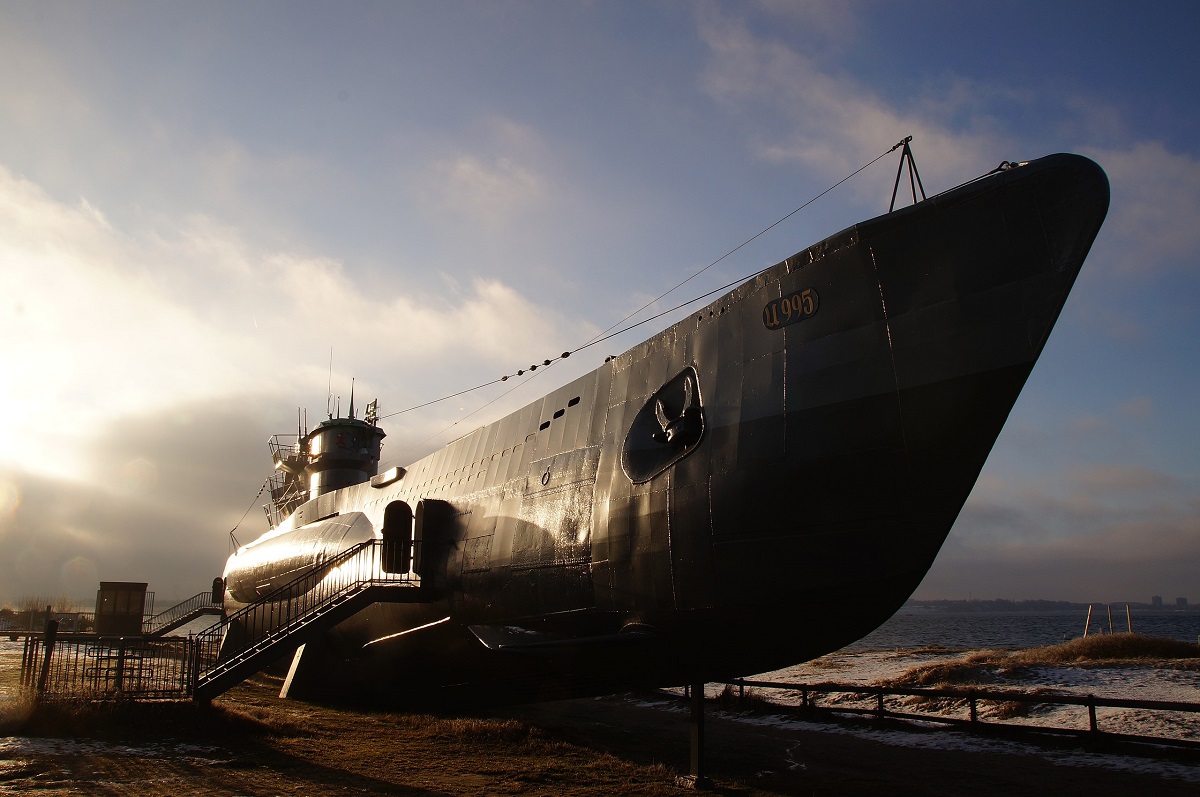GUPPY: The U.S. Navy Submarine Program That History Almost Forgot

Summary and Key Points: The Greater Underwater Propulsion Power Program (GUPPY) was launched by the U.S. Navy after World War II to enhance submarine speed, maneuverability, and endurance.

-Sparked by the effectiveness of German U-boats, GUPPY aimed to modernize American submarines, starting with reverse engineering German Type XXI U-boats.
-The program, which ran from 1947 to 1963, included multiple iterations, such as GUPPY I and II, focusing on streamlining structures, increasing battery capacity, and adding snorkels.
-GUPPY's success paved the way for future submarine advancements, significantly improving U.S. naval capabilities and shaping the development of modern nuclear-powered submarines.
GUPPY Program: How WWII Lessons Revolutionized U.S. Submarine Technology
After World War Two, the United States Navy launched a program to improve their submarine technology. Known as the Greater Underwater Propulsion Power Program, or GUPPY, the program was designed to improve submarine speed, maneuverability, and endurance.
The need for GUPPY was made clear during World War Two, when German U-boats terrorized Allied shipping lanes and combat vessels. And while the submarine had been used consistently during World War One, and had existed in rudimentary form since the 1860s, it was the proliferation of submarines during World War Two that convinced the Americans they needed better submarine technology.
GUPPY: Origins of the program
The Chief of Naval operations approved GUPPY in 1946. The program had a humble beginning: testing and reverse engineering two German Type XXI U-boats, which the Germans had surrendered to the Americans as a war reparation. Later, the program would expand to the upgrading of existing US submarines. But from the start, GUPPY had four distinct objectives. One, to increase the battery capacity of submarines. Two, to streamline submarine structures. Three, add snorkels. And four, improve fire control systems.
GUPPY would proceed through several program variants. In order, the variants were: GUPPY I; GUPPY II; GUPPY IA, Fleet Snorkel; GUPPY IIA; GUPPYIB; and GUPPY III.
GUPPY I began in 1947, with upgrades to two Tench-class submarines, the Odax and the Pomodon. Through GUPPY, the Tench submarines were upgraded to include streamlining of the bridge and shears structures, and periscope and radar mast supports.
Also, in an effort to reduce the Tench’s hydrodynamic drag, deck guns and one periscope were removed. And despite the GUPPY program objective of adding snorkels, the Tench submarines were not given snorkels.
The submarines were given an SV radar aerial, however, at the top of the sail. Further, the submarine’s capstans, cleats, and rail stanchion supports were redesigned to be retractable, or removable, for dives. The most visibly apparent external modification of the GUPPY I program were changes to the bow shape. Whereas the Tench submarines had initially featured a sharp V-shaped bow, after GUPPY I, the submarines featured rounded “Guppy bows,” that improved the submarines performance underwater.
The GUPPY I changes were not just external. Internally, the Tench submarines underwent signification modifications, too. For example, rearrangements were needed to house larger battery wells (for batteries with improved electrical power).
The Tench’s original high-speed motors were replaced with slow-speed motors. Open-front switchboards were replaced with enclosed splash-proof cabinets. Lighting and electrical loads were converted from 120 volt 60 hertz alternating current to 120 volt 400 hertz AC. And a new and improved air conditioning system was installed.
In all, the GUPPY I modifications were noticeable. The Pomodon, which before GUPPY had been limited to just a 8.75 knot top speed when submerged, was able to achieve 18.2 knots – more than a 100 percent improvement.
Expansion of the program
After the success of GUPPY I, the program was expanded. GUPPY II, which ran from 1947 to 1951, far exceeded its predecessor in scope; whereas GUPPY I had upgraded two boats, GUPPY II upgraded two dozen. Despite the expansion, GUPPY II was similar to its predecessor in many ways. The main exception was that GUPPY II designs retained both periscope and introduced a perfected snorkel.
The design, which featured three new masts (snorkel induction, snorkel exhaust, and ESM mast), called for new sail designs. BuShips offered two options: the Electris Boat Sail, which had a straight trailing edge, round windows, and wider, rounded forward edge; and the Portsmouth Sail, which featured a thinner top, curved trailing edge, square windows, and a sharper forward edge. And, a few GUPPY II submarines would be built around a third option, the Northern Sail, which raised the bridge, allowing for manned operation in more severe weather.
The GUPPY I guinea pig submarines, the Odax, and the Pomodon, were upgraded again under the GUPPY II program – as were 22 other submarines, including the Cochino, Greenfish, Halfbeak, Amberjack, and Remora. Several GUPPY II submarines were later given to foreign navies, like the Trumpetfish (Brazil), the Grenadier (Venezuela), and the Tusk (China).
The end of the GUPPY program
The GUPPY program continued through the 1950s, with GUPPY IA, Fleet Snorkel, GUPPY IIA, and GUPPY IB. By 1961, GUPPY III – the program’s last iteration – began and ran until 1963, when the program concluded. The GUPPY III, while the program’s swan song, did entail extensive modifications. For example, the Tiru, which was the GUPPY III prototype, was cut in half and lengthened with a 12.5-foot section forward of the control room, added to make space for a new sonar room, berthing, electronics, and storerooms.
Of course, modern nuclear-powered submarines are more advanced than the GUPPY subs. However, the GUPPY program was an important stepping stone towards developing the submarine technology that is used today.

About the Author: Harrison Kass, Defense Expert
Harrison Kass is a prolific defense writer with over 1,000 published pieces. An attorney, pilot, guitarist, and minor pro hockey player, Harrison joined the US Air Force as a Pilot Trainee but was medically discharged. Harrison holds a BA from Lake Forest College, a JD from the University of Oregon, and an MA from New York University. Harrison listens to Dokken.
All images are Creative Commons and/or Shutterstock.
